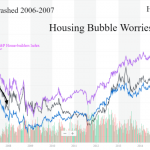U.S. Republican politicians, more than any other political animal, like to talk about “balanced budgets”. Because of this, many of these same politicians also make references to returning to a gold standard. Why?
For the answer to that question; we turn to a legendary hater of gold (and the gold standard), John Maynard Keynes. This infamous, economic charlatan famously whined that a gold standard functioned as a set of “Golden Handcuffs.” This begs further questions. Who was being handcuffed? How were they being handcuffed?
It’s actually very simple. A “gold standard” is a monetary system based upon Honest Money. This is a concept which is now almost completely unknown in the Western world. In large part, this is because very few people even understand the correct definition of the word “money”.
Money (as opposed to mere currency) must be a unit of value. This means that either the money itself must have intrinsic value (such as when we had gold and silver money), or it must be backed by a hard asset of intrinsic value, i.e. a gold standard. In a monetary system of Honest Money; there are severe constraints placed upon the economic policies of government.
To begin with; in an Honest Money system, it is impossible for our governments to run up large deficits with their fiscal policy. A gold standard is a system of balance of payments. This is in contrast to the fraudulent fiat currencies of our present economic system. Because these currencies, this pretend-money, is inherently worthless, there are no constraints placed upon the fiscal policies of government. The Handcuffs are removed.
The gold standard operates in a similar fashion with respect to monetary policy. Again, because we are dealing with Honest Money rather than worthless currency, governments (or their central banks) can only create currency in amounts proportionate to the gold reserves of that government. This is in contrast to the reckless (and ultra-fraudulent) currency creation by the Federal Reserve. Below is the last, legitimate representation of the U.S. monetary base.













Leave A Comment